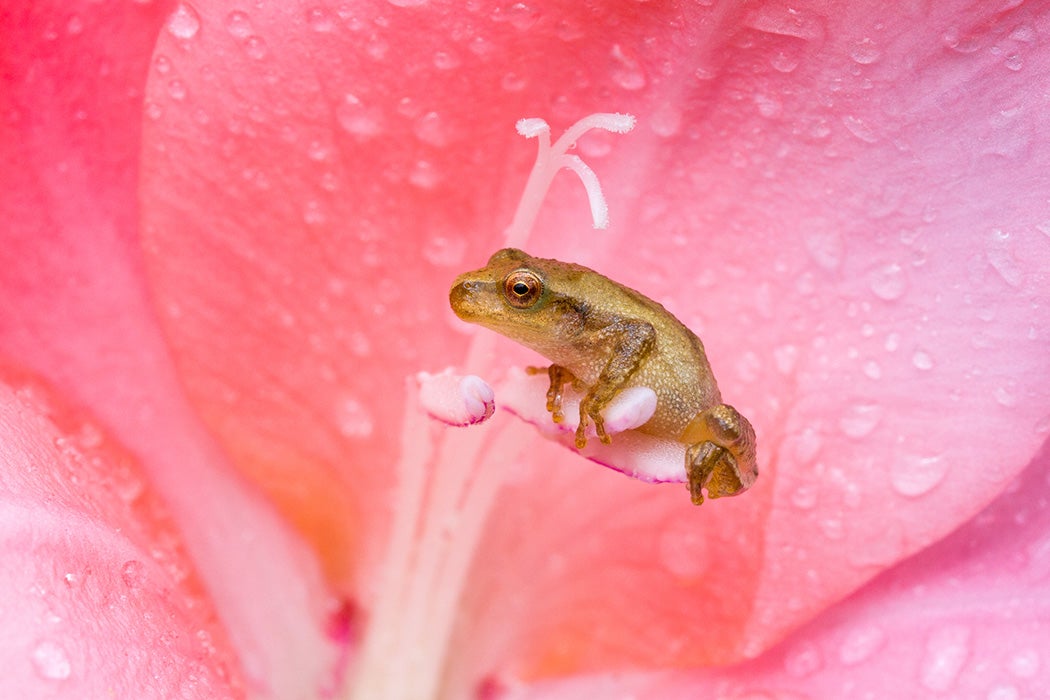On the first warm night in March or April in many regions of the United States, a cheerful, high-pitched sound can be heard at dusk: Peep! Peep! Peep!
This delightful chorus, sometimes likened to bells, is composed of Pseudacris crucifer, commonly known as peepers, which are a common species of frog. These frogs mark the beginning of spring through many regions of the US with their characteristic nightly peeps.
But this natural spring tradition is shifting as a result of climate change. A recent study found that changes in climate—temperature and heat patterns—have been causing peepers to “peep” earlier than they have in the past.
Peepers breed in semi-permanent pools in the early spring across eastern North America. Male frogs sing to attract mates, and they can peep up to twenty-five times a minute. Peepers are a mere few grams in weight, but their call is as loud as songbirds that weigh 10 to 100 times more than these small frogs.
In a 2013 study, ecologist Gary Lovett sought to research the timing of peepers’ calls to see whether they were shifting seasonally, a result that had been found in New York and studied in other parts of the county, including Michigan and California, with similar species.
To determine timing, Lovett used records of the date of first calling, or the first time a peep was heard, over sixteen years in southeast New York. To add a climate variable, he used records of air temperature and precipitation data.
The strongest predictor of peepers’ first call was temperature, measured as thermal sum, which is the average number of days in which temperature was above 3 degrees Celsius, or 37.4 Fahrenheit. This metric, which shows heat patterns over days, was a far stronger predictor than the daily temperature average.
But there are more factors than temperature that can impact the date of first call. If the breeding ponds had water in them, thermal sum was a strong predictor of the day of first peep. But if the ponds were dry, the thermal sum metric was not a good measure of the peeps, because no calling occurred. Since climate change is likely to increase temperatures in winter, and lead to more rainfall and less snow, Lovett concludes that it is hard to predict how these changes could affect peepers and their calling patterns.
Weekly Newsletter
And it’s not just peepers or frogs in general. All amphibians breed in water, and breeding and related behaviors have been highly impacted by climate change so far. Many amphibians breed in semi-permanent pools or seasonally wet pools, called vernal pools. Land-use change and climate change have destroyed many vernal pools, impacting salamander breeding habitat.
While Lovett studied the peeper community of southeastern New York, this study contributes to the understanding of peeper behavior everywhere. Lovett writes: “It is important to understand the climatic cues for amphibian breeding behavior to improve the knowledge of the basic natural history of the animals and also to provide better predictions of how climate change will affect amphibian behavior and survival.”
Support JSTOR Daily! Join our new membership program on Patreon today.







